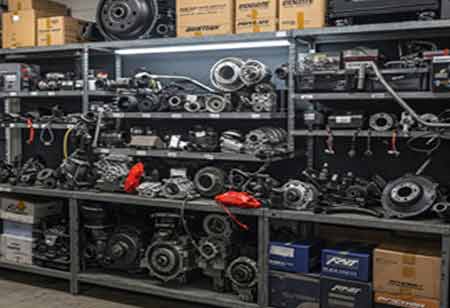Thank you for Subscribing to Auto Business Outlook Weekly Brief
Growing Importance of Auto Finance
Macroeconomic changes, customer behavior, and new rules have shaped the auto-financing sector.

By
Auto Business Outlook | Tuesday, August 06, 2024
Stay ahead of the industry with exclusive feature stories on the top companies, expert insights and the latest news delivered straight to your inbox. Subscribe today.

Leasing companies without banking licenses have limited access to refinancing deposits.
FREMONT, CA : Macroeconomic changes, customer behavior, and new rules have shaped the auto-financing sector. The sudden economic shock and COVID-19 are causing even more changes in these locations, and new and used car sales have plummeted. Ride-sharing, public transportation, and private car use have changed dramatically because of the pandemic. Auto sales and evolving mobility patterns have changed the auto-loan sectors. Auto leasing is likely to return in the year's second half, but the auto loan industry may still need to recover due to its slow growth over the past several years.
The auto market will fall sharply, then recover slowly or quickly. Despite challenges, fintech, independent leasing companies with digital channels, and automotive OEMs are entering the auto-financing market. These changes will influence auto financing. Their captive-financing arms partner with or build fintech. The fast-growing subscription business is also changing market dynamics. Due to customer interest, industry participants seeking long-term growth study this strategy. Subscriptions are boosting leasing growth. COVID-19 will lower car revenues, but segment-specific effects will vary. With COVID-19, private-vehicle sales have plummeted.
As financial contractions approached, consumers delayed discretionary purchases and saved more. Consumer wariness will reduce light vehicle sales and may lead purchasers to buy smaller automobiles. Private vehicle sales will improve but remain below pre-crisis levels. COVID-19 affected customer behavior and auto sales. The pandemic has boosted B2C online and digital sales. OEMs are "virtualizing" their dealerships and operating remotely to address these changes. They occasionally offer contactless test drives and servicing. Some salespeople do everything online. As consumers move online, non-digital marketing is decreasing.
With these implications, there will be more digital and direct B2C channels. New fintechs may have an advantage over established players because they sell items online and via mobile. Automotive and mobility customers prefer digital sales channels. As economies recover, auto dealership in-person interactions may decline further. Customers demand a flawless online experience, including hassle-free pricing and data sharing for reciprocal rewards based on retail purchases. Rental and shared mobility services could be part of a multimodal bundle for smooth mobility in all situations.
Leasing is growing faster than auto loans because consumers want flexibility. Many consumers prefer shorter contracts and a pay-as-you-go model, so companies are targeting B2C with subscription offers. Some subscriptions include car insurance and maintenance. There is a rising demand for auto subscriptions and leasing. Many auto-financing companies need more risk-management strategies to preserve leased vehicles' residual value. Companies must improve their risk-adjusted pricing to prevent unanticipated losses and ensure the efficient turnover of vehicles returned after a lease. The action will ultimately reduce inventory levels.






